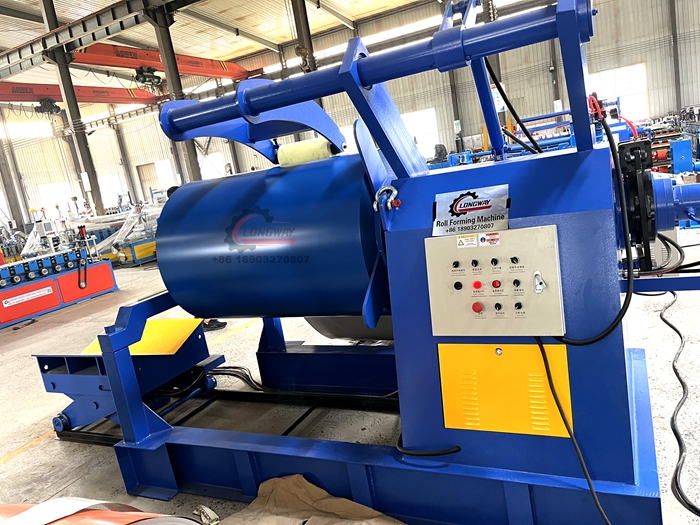Roof Tile Loader Equipment for Efficient Construction and Building Material Handling
The Role of Roof Tile Loading Machines in Modern Construction
In the rapidly evolving construction industry, efficiency and productivity are paramount. One of the innovations that have significantly contributed to these aspects is the roof tile loading machine. This specialized equipment plays a crucial role in the handling and installation of roof tiles, addressing various challenges faced by construction workers.
Understanding Roof Tile Loading Machines
A roof tile loading machine is designed to streamline the process of moving, lifting, and placing roof tiles onto buildings. These machines come in various configurations, including forklifts, conveyor systems, and robotic arms, each tailored to meet specific needs on construction sites. The fundamental function of these machines is to transport roof tiles from one point to another, reducing the manual labor traditionally associated with this task.
Enhancing Efficiency
The primary advantage of utilizing roof tile loading machines lies in their efficiency. Manual loading and unloading of tiles is not only time-consuming but also labor-intensive. Workers often face physical strain, leading to increased chances of injuries. By employing loading machines, contractors can minimize human effort, facilitating faster loading and placement of tiles. This efficiency translates into reduced labor costs and completion times, which are critical in today’s competitive construction market.
Safety First
Safety is a major concern in construction. The lifting of heavy materials like roof tiles exposes workers to hazards, including musculoskeletal injuries and accidents resulting from improper handling. Roof tile loading machines significantly mitigate these risks. Equipped with safety features such as automatic shut-offs and load sensors, these machines ensure that tiles are handled safely. Moreover, operators can maintain a safe distance from the action, further enhancing workplace safety.
roof tile loading machine

Versatility and Adaptability
Roof tile loading machines are not one-size-fits-all. They can be adapted to suit various types of roof tiles, including ceramic, slate, and concrete. Different models can be selected based on the size, weight, and shape of the tiles being installed. This versatility makes them indispensable tools in modern construction. Additionally, many machines are designed to operate in various environments, from flat roofs to steep pitches, ensuring that they can be employed across a diverse range of projects.
Streamlining Logistics
In construction, logistics are often a make-or-break factor for project success. Roof tile loading machines help streamline logistics by optimizing the movement of materials onsite. By efficiently transporting tiles from delivery trucks to the installation site, these machines reduce downtime and help ensure that projects stay on schedule. Furthermore, they minimize the risk of tile damage during transportation, which can be both costly and time-consuming to rectify.
Environmental Considerations
In today’s environment-conscious world, the construction industry is increasingly focusing on sustainable practices. Roof tile loading machines contribute to this goal by reducing the carbon footprint associated with transporting materials. Their efficiency allows for fewer trips and less fuel consumption, making them a more eco-friendly option compared to traditional loading methods. Additionally, reducing manual labor helps decrease the overall energy consumption of a construction site.
Conclusion
In summary, roof tile loading machines represent a significant advancement in construction technology. Their ability to enhance efficiency, improve safety, offer versatility, streamline logistics, and promote environmental sustainability makes them invaluable tools for modern construction projects. As the industry continues to evolve, the demand for such innovative equipment is likely to grow, leading to further developments and improvements. Embracing technologies like the roof tile loading machine not only benefits contractors but also sets the stage for safer, more productive, and eco-friendly construction practices. By leveraging these machines, the construction industry can continue to meet the demands of an ever-changing market while ensuring high standards of quality and safety.
-
Roof Panel Machines: Buying Guide, Types, and PricingNewsJul.04, 2025
-
Purlin Machines: Types, Features, and Pricing GuideNewsJul.04, 2025
-
Metal Embossing Machines: Types, Applications, and Buying GuideNewsJul.04, 2025
-
Gutter Machines: Features, Types, and Cost BreakdownNewsJul.04, 2025
-
Cut to Length Line: Overview, Equipment, and Buying GuideNewsJul.04, 2025
-
Auto Stacker: Features, Applications, and Cost BreakdownNewsJul.04, 2025
-
Top Drywall Profile Machine Models for SaleNewsJun.05, 2025








